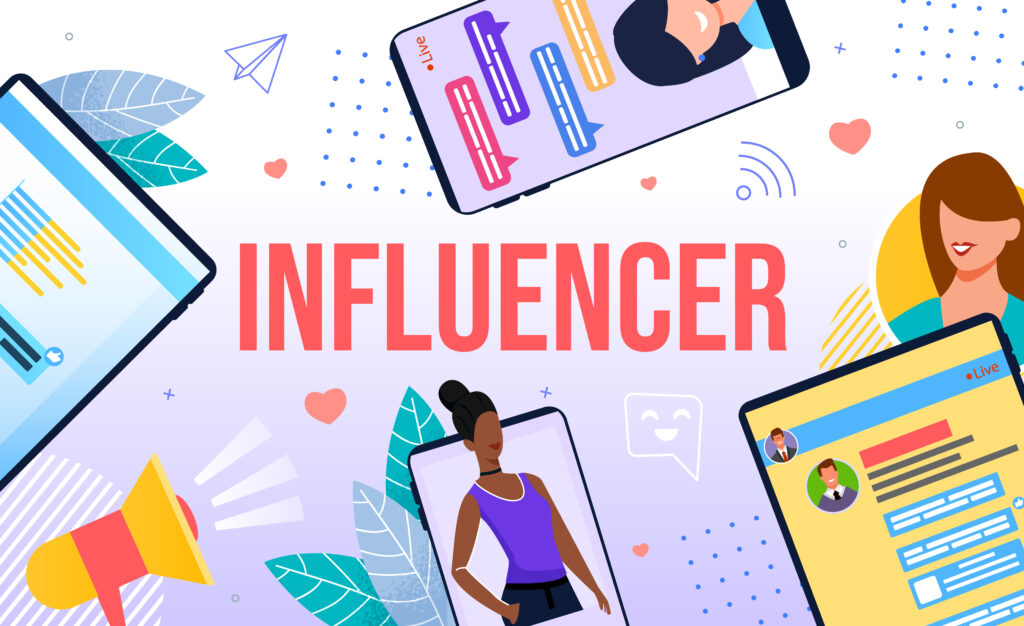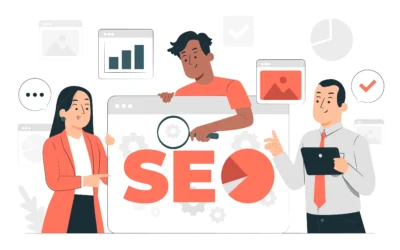Important Influencer Marketing Trends for 2023 that You Should be Aware Of

The popularity of influencer marketing is on the rise, with the market size reaching $16.4 billion in 2022. It is predicted to grow by 29% to $21.1 billion in 2023, indicating significant growth and change. As such, here are 9 emerging trends in influencer marketing that you can expect to see in 2023.
- The Expansion of Social Media-Based Search
One of the most significant social media trends is the shift from traditional search engines like Google to social media platforms for information search. According to Google, 40% of young people prefer using TikTok and Instagram as search engines rather than Google. Social media platforms provide a more personalized and engaging experience for users compared to search engines. These platforms utilize tailored algorithms based on user preferences and browsing history to deliver more relevant content. Additionally, social media platforms offer a plethora of user-generated content, which is deemed more trustworthy and relatable compared to traditional commercial content.
Therefore, collaborating with TikTok influencers is an effective search engine optimization (SEO) strategy for brands.
2. Influencer subscriptions
Influencer subscriptions are an extra way for content creators to earn income by providing exclusive content, perks, and services to their subscribers in exchange for a monthly fee. This approach enables influencers to monetize their content more efficiently, offer a more personalized experience to their followers, build a loyal fan base, and strengthen their relationships with their audience.
In the US, Instagram subscriptions are accessible to all creators who meet certain requirements, such as being at least 18 years old, having a minimum of 10,000 followers, and complying with Instagram’s policies. In Canada, Australia, and the UK, subscriptions are currently available by invitation only. TikTok, on the other hand, is testing LIVE subscriptions by invitation only, with plans to release them worldwide soon.
As the trend of influencer marketing continues to grow, we can expect to see more influencers exploring the potential of subscription-based services to expand their reach and revenue streams.
3. New ways for influencers to earn revenue
Influencers are expanding their horizons beyond sponsored posts and exploring entrepreneurship, which is a positive development. Many influencers are now starting their own businesses, providing services, and creating and selling their own digital and physical products. This trend is particularly evident in niches such as personal development, financial advice, nutrition, and spiritual awakening, but it is also becoming common in other areas. For instance, Sindija Bokāne is a creator who is inspiring others by running a digital marketing agency that coaches influencers, bloggers, and brands, offering social media courses and challenges, selling her presets, and engaging in other ventures.
4. The emergence of content created by influencers themselves – IGC (Influencer-generated content)
Influencers’ content creation skills have become a valuable asset for brands, and this trend has been on the rise for a while now. Brands are increasingly collaborating with influencers to get visually appealing content for their social media platforms. This trend is expected to continue to grow as influencer content is considered more authentic, relatable, and engaging than professionally produced content. Moreover, it is a cost-effective way to obtain trendy and visually attractive content, and it’s especially important for new channels like TikTok. As creating catchy and potentially viral TikTok videos is not an easy task, many companies are hiring in-house creators to develop content for their digital channels.
5. The Emergence of Multi-Channel Campaigns
As people tend to use multiple social media platforms on a daily basis, brands cannot ignore cross-channel campaigns anymore. By collaborating across different channels, brands can reach a larger audience. For instance, TikTok is primarily used for entertainment, while Instagram is used for socializing, getting inspiration, and product recommendations. By promoting a product through collaborations on both platforms, brands can share it in a creative and fun way on TikTok, while presenting it in a more aesthetic and informative way on Instagram.
6. Increased Emphasis on Data Analysis and ROI Measurement
Marketers typically handle their influencer collaborations through emails and direct messages, but this can be problematic. Without real-time data and reports, it can be challenging to determine whether the collaboration is successful or not. To ensure that the influencer’s audience matches the brand’s target group, it is essential to choose the right influencers. This is why more and more marketers are turning to influencer marketing platforms. These platforms offer real-time audience demographics directly from the social media platform, making it easier to evaluate the success of the collaboration.
7. Stricter Regulations on Influencer Collaborations
With the increasing number of brands seeking influencer collaborations, there are emerging legal challenges. The Federal Trade Commission and Advertising Law of several countries require all advertising content to be clearly marked. Influencers must disclose when they are sponsored by a brand or provided with a product. Some countries are taking this matter into their own hands and introducing national regulations. For instance, Denmark has prohibited influencer advertising for products that are inappropriate for minors under 18 years old, and it will be interesting to observe the impact on other Scandinavian markets. Overall, the expectation is that stricter regulations will promote more responsible influencer marketing practices.
8. Collaborative Product Creation Between Brands and Influencers
In recent times, there has been a rise in collaborations between brands and their ambassadors, where they launch new products or collections together.
This approach is beneficial for both the brand and the influencer as it helps to establish a genuine connection between the two and encourages the influencer’s followers to become customers. This trend has been especially popular in the fashion industry, with brands like GymShark teaming up with their ambassador Whitney Simmons to launch three collections, all of which sold out within days. Similarly, in Finland, Bubbleroom collaborated with a local influencer Sara Sieppi to create a clothing collection.
9. Greater Focus on Establishing Strong Influencer Relationships
Nowadays, many brands are engaging in influencer marketing on a regular basis, not just during the major holidays, as it has become a popular marketing tactic. Establishing long-term partnerships with influencers is highly recommended as they tend to stand out on social media and are perceived as more credible, resulting in better outcomes for the brand. Furthermore, long-term collaborations are less time-consuming for marketers. Due to the rise in influencer marketing, more brands are competing to work with high-quality influencers. Therefore, once a brand has identified its influencers, it’s advisable to transform them into brand ambassadors. Being a brand ambassador takes influencer marketing to the next level as ambassadors use the brand’s products daily and promote them both on and off social media, leading to a greater impact than a one-time collaboration on Instagram.






